Shakespeare and his theatres
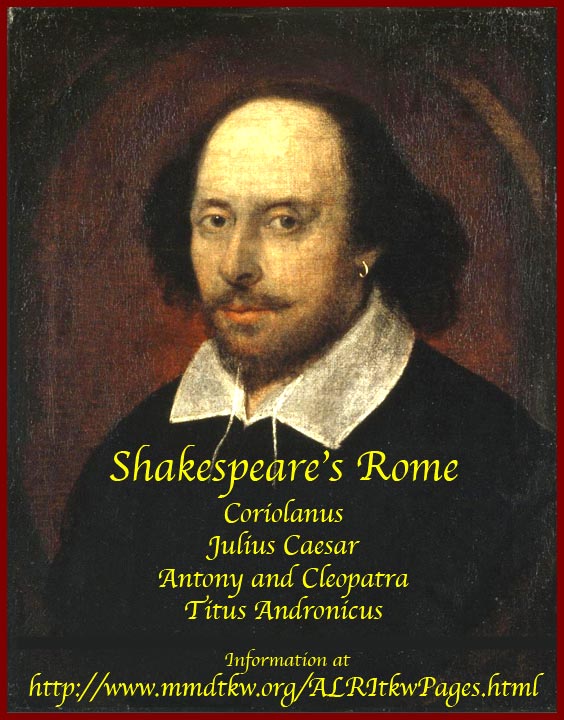
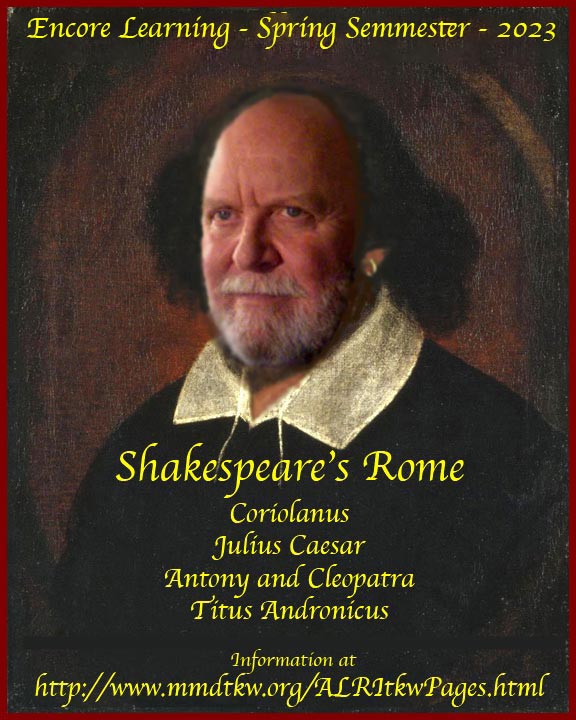
http:/www.mmdtkw.org/RomeShak101-Shakespeare1.jpg
http:/www.mmdtkw.org/RomeShak102-ShakespeareTKW.jpg
The four plays covered in this course are Coriolanus, Julius Caesar, Antony and Cleopatra, and Titus Andronicus
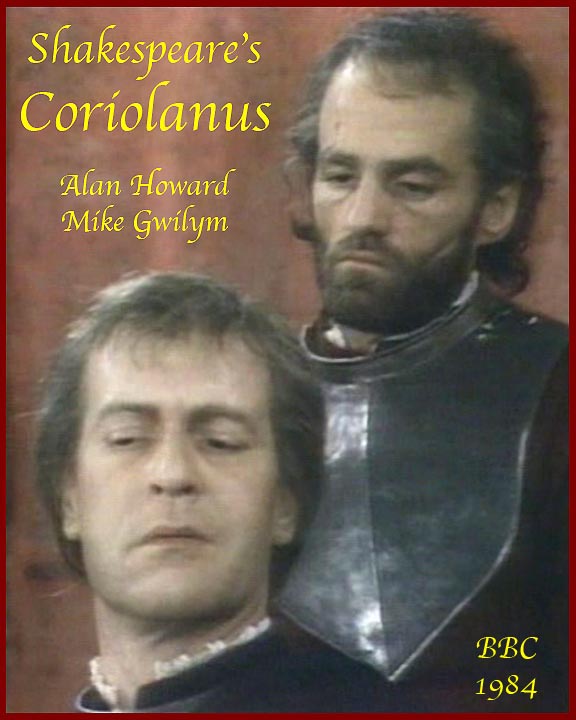
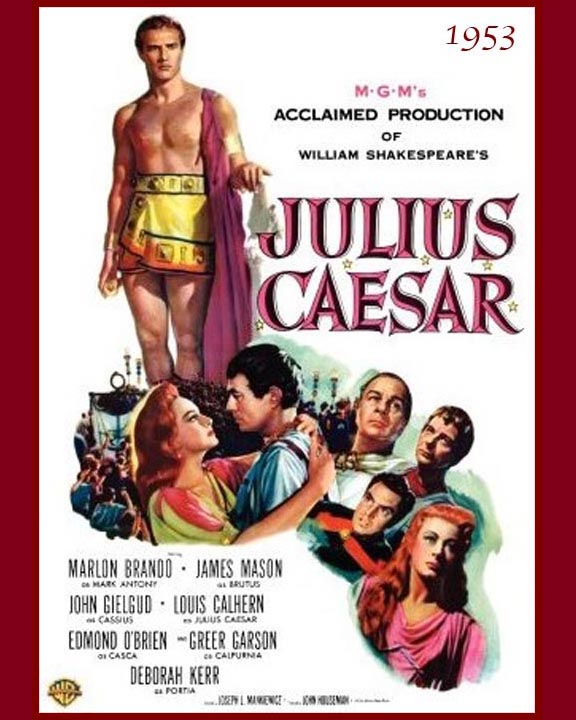
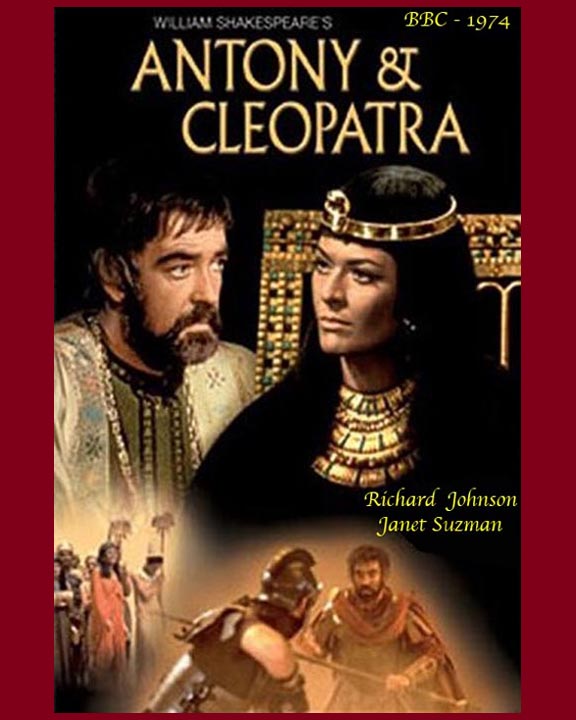
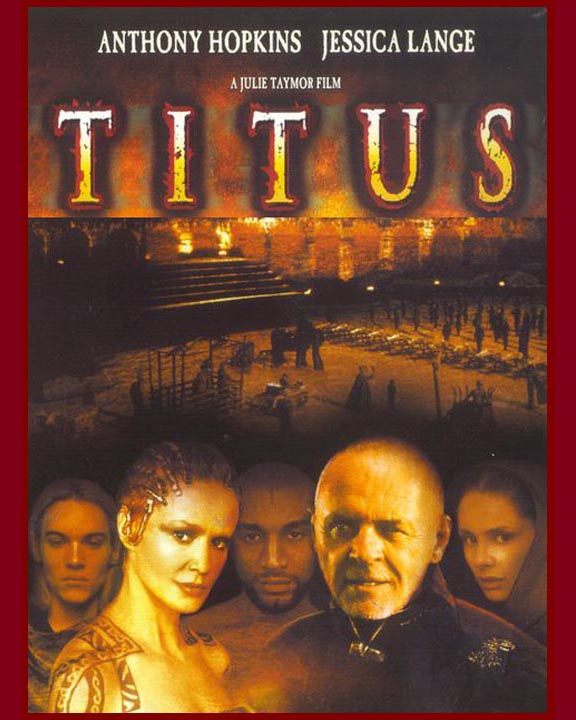
http:/www.mmdtkw.org/RomeShak103-Coriolanus.jpg
http:/www.mmdtkw.org/RomeShak104-JCaesar.jpg
http:/www.mmdtkw.org/RomeShak105-AntonyCleo.jpg
http:/www.mmdtkw.org/RomeShak106-Titus.jpg
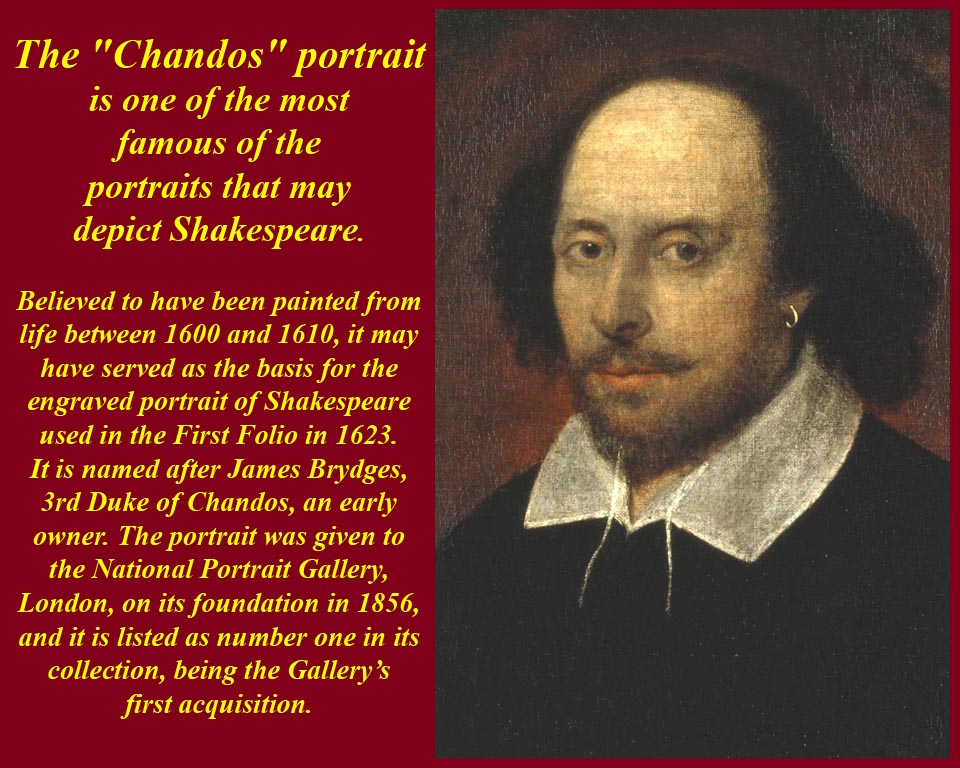
http:/www.mmdtkw.org/RomeShak107-Shakespeare2.jpg
Shakespeare's visage (and even his existence) has been widely debated. Those who refuse to believe that a glove maker's son from the village of Stratford could have become a world renowned playwright and who would rather find a noble author are just snobs. As to his appearance, only recently has a contemporary portrait emerged that confirms that our pictorial image of the man is accurate. The image above, the "Chandos portrait", is the most familiar.

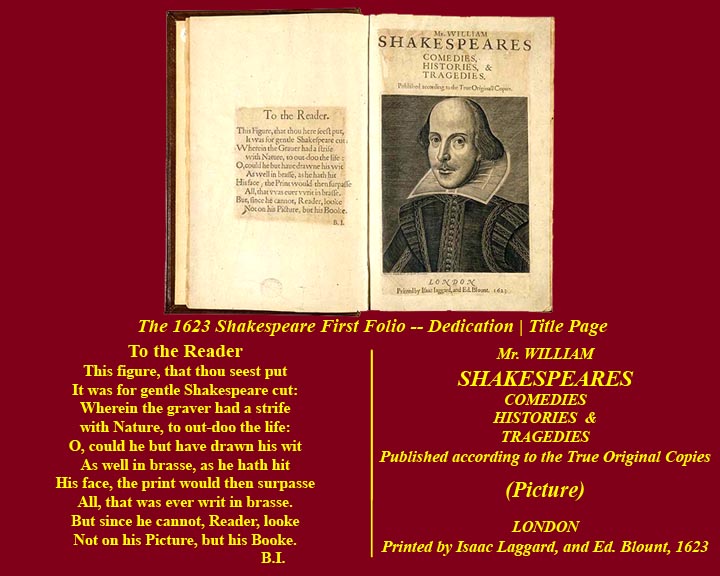
http:/www.mmdtkw.org/RomeShak108-Shakespeare.jpg
http://www.mmdtkw.org/RomeShak109-shakespearefolio.jpg
The picture opposite the dedication page of the 1623 First Folio was engraved for people that personally knew the already dead author, and it would certainly have been seen by his children and perhaps by his wife, who may still have been alive (she died that year). If it was inaccurate, they would have objected.
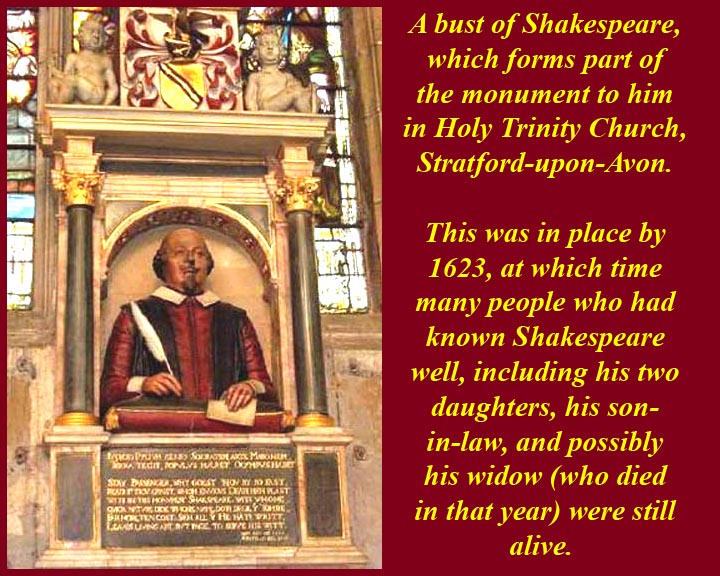
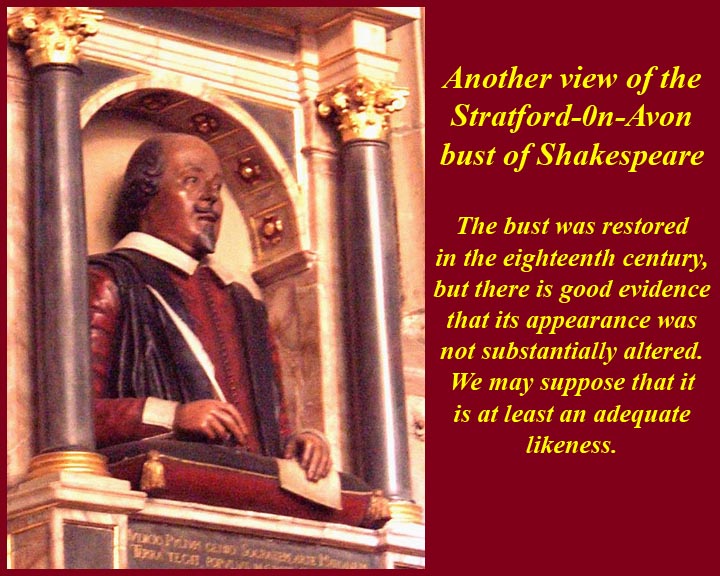
http:/www.mmdtkw.org/RomeShak110-TombBust1.jpg
http:/www.mmdtkw.org/RomeShak111-TombBust2.jpg
The bust over Shakespeare's tomb in Trinity Church, Stratford, was also in place before 1623 and would have been seen by family and friends who knew his appearance.
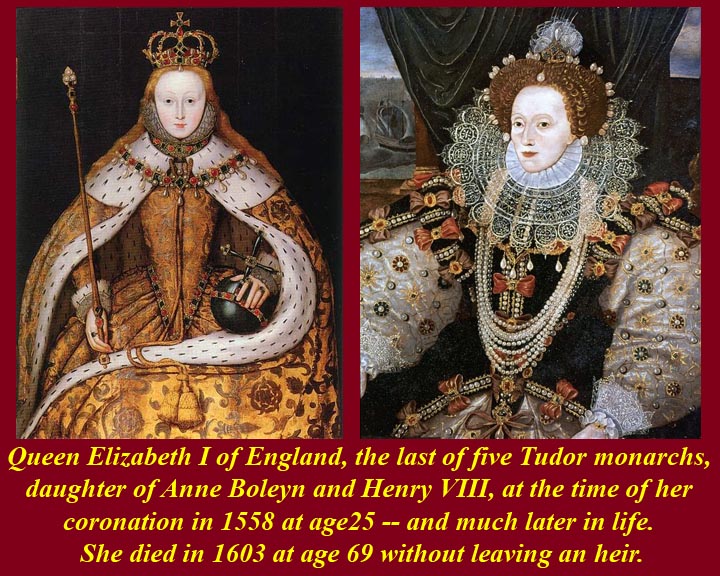
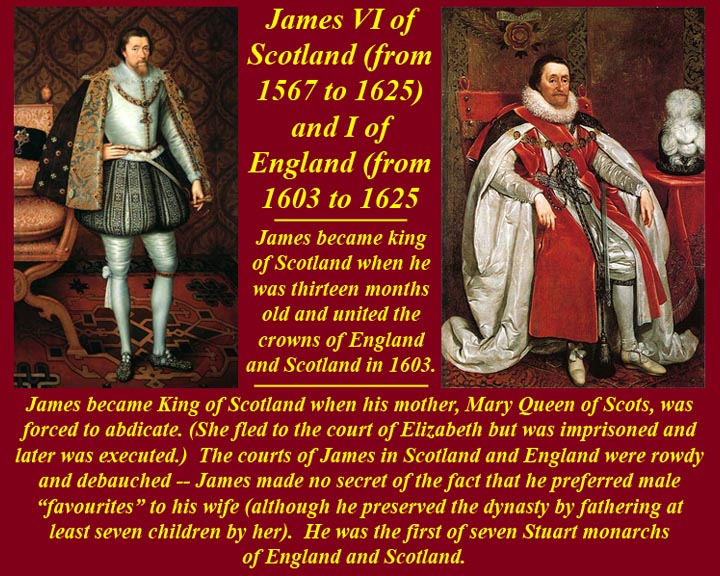
http:/www.mmdtkw.org/RomeShak112-ElizabethPortraits.jpg
http:/www.mmdtkw.org/RomeShak113-JamesVIandI.jpg
Shakespeare's royal patrons were Elizabeth I and James I. Hence, the appellations Elizabethan and Jacobean for the literature of their periods.
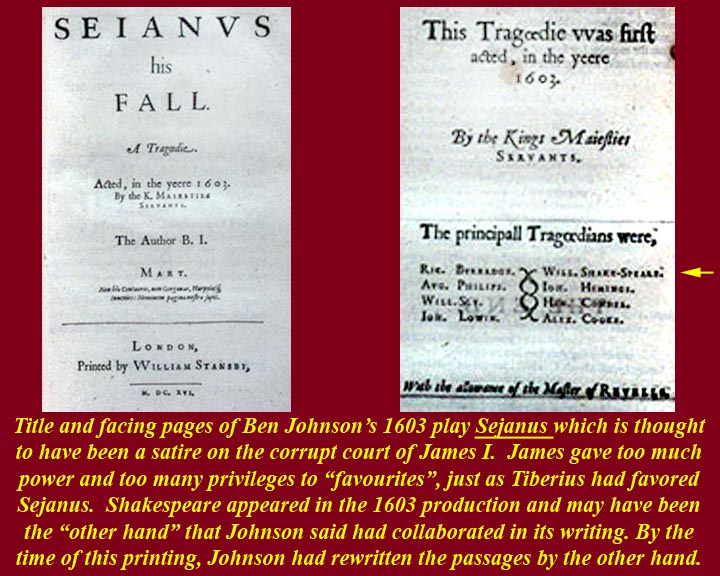
http:/www.mmdtkw.org/RomeShak114-Sejanus.jpg
It has been suggested that some of of Shakespeare's Jacobean plays were meant either to parody the court of James or to present object lessons to King and court. The royal court and the actions of the king -- especially his relationship with male "favourites" was widely ridiculed: e.g., "Elizabeth was King and James is Queen". It is also documented that Shakespeare was a member of the cast in the first production of Ben Johnson's Sejanus, which was a blatant parody of the first Jacobean court and which caused considerable trouble for its author.
Sources of Shakespeare's Roman tragedies:
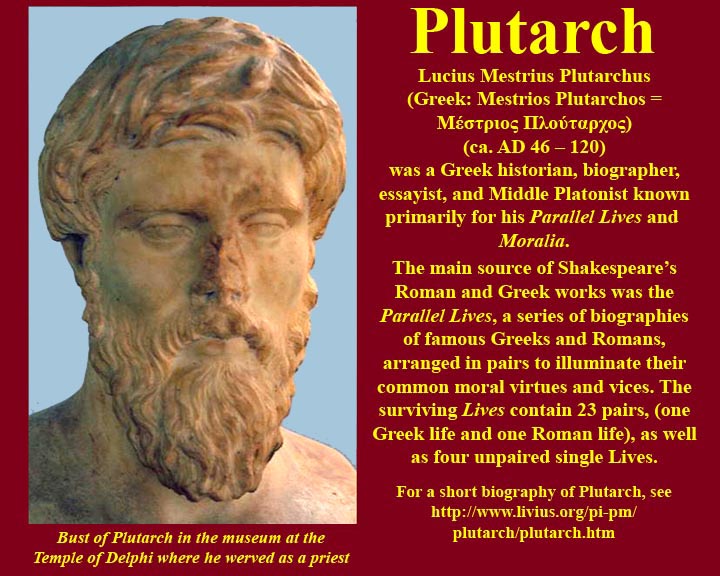
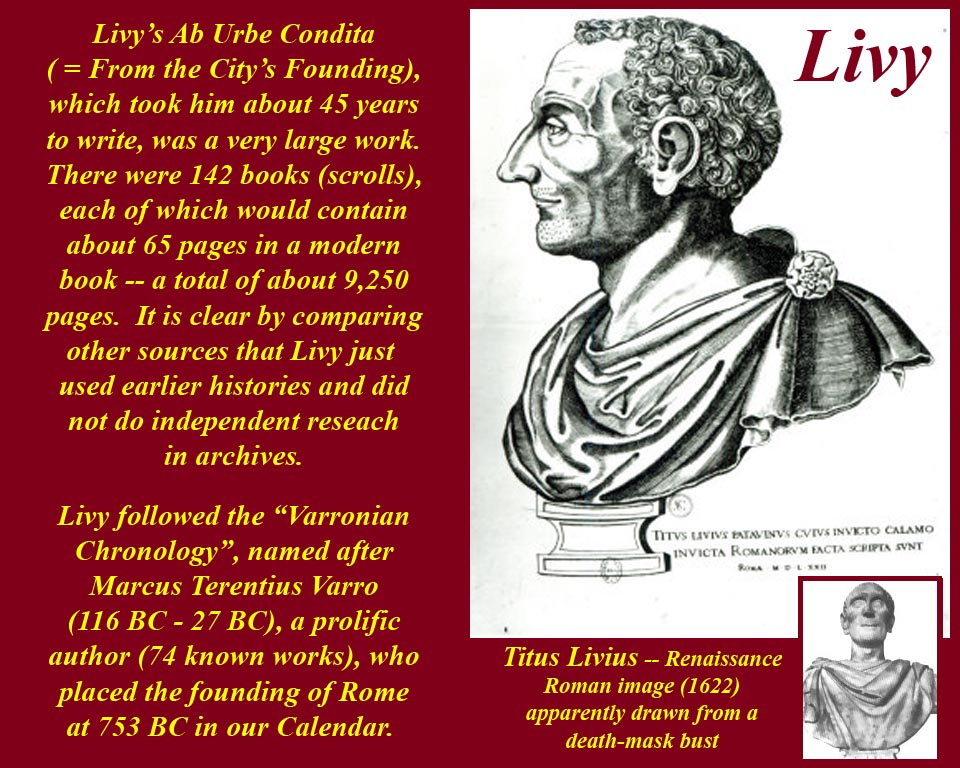
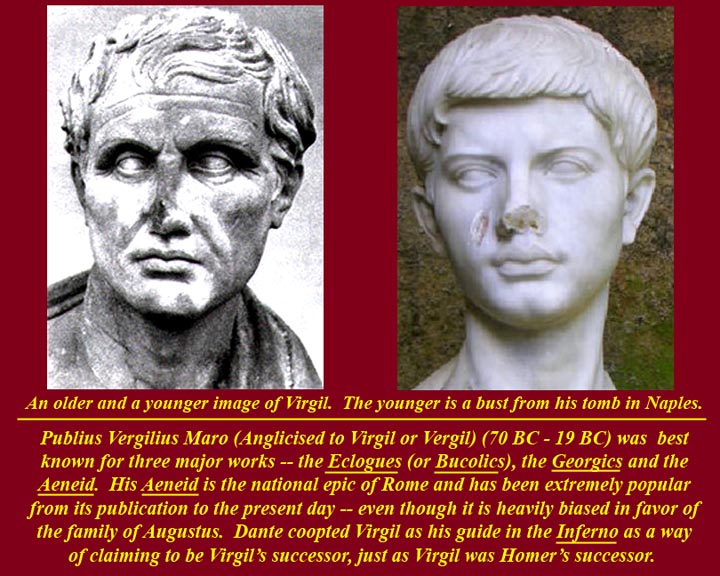
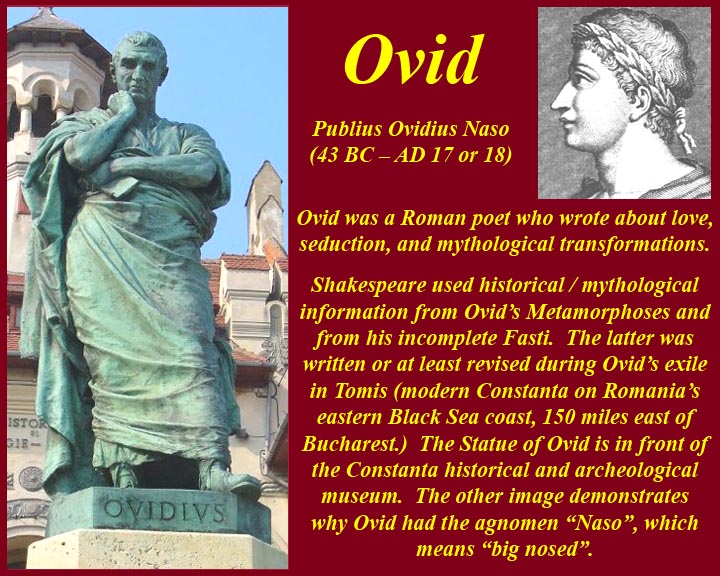
http:/www.mmdtkw.org/RomeShak115-Plutarch.jpeg
http:/www.mmdtkw.org/RomeShak116-Livy.jpg
http:/www.mmdtkw.org/RomeShak117-Virgil.jpg
http:/www.mmdtkw.org/RomeShak118-Ovid.jpg
The sources for Shakespeare's classical Roman and Greek plays were English translations of classical authors. It's clear that Shakespeare did not use the sources in their original languages -- he lifted vast stretches of lines from the English translations.
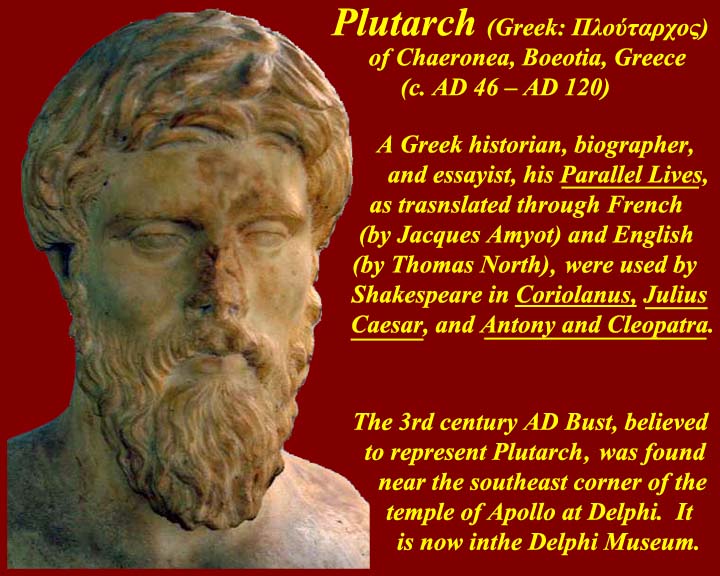
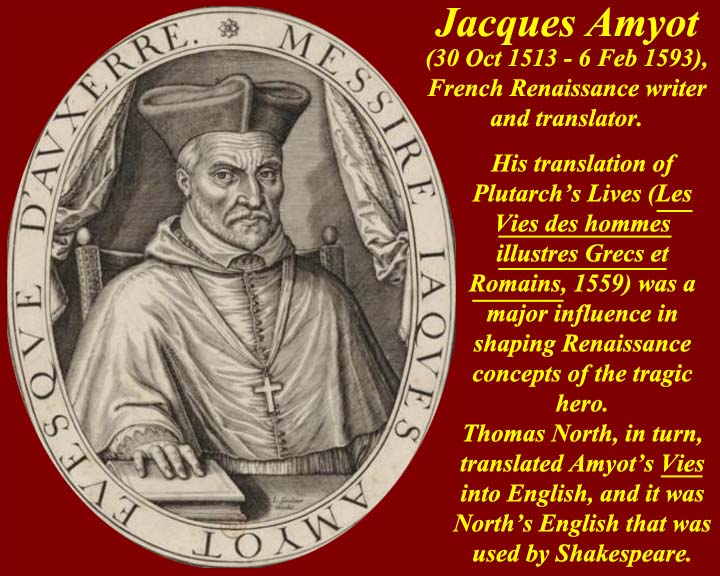
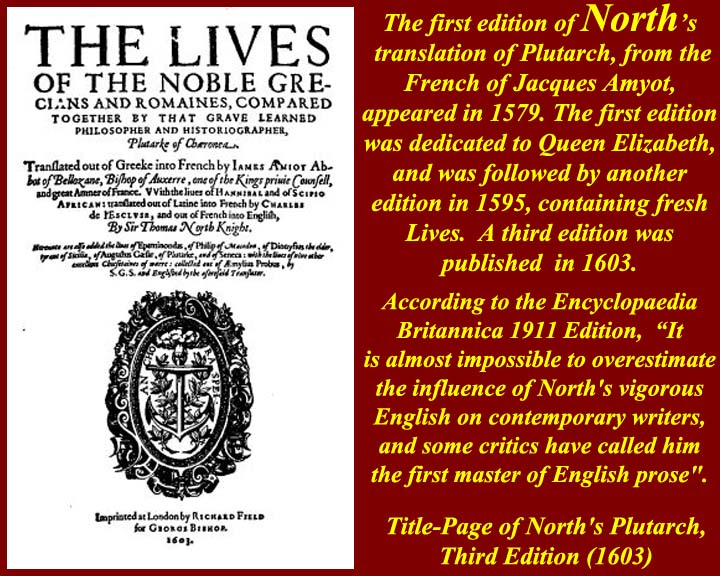
http://www.mmdtkw.org/RomeShak118x-PlutarchDelphi.jpg
http://www.mmdtkw.org/RomeShak118y-JacquesAmyot.jpg
http://www.mmdtkw.org/RomeShak118z-North'sPlutarch.jpg
North's English translation of Plutarch's lives is on the Internet at http://oll.libertyfund.org/titles/plutarch-plutarchs-lives-englished-by-sir-thomas-north-in-ten-volumes.
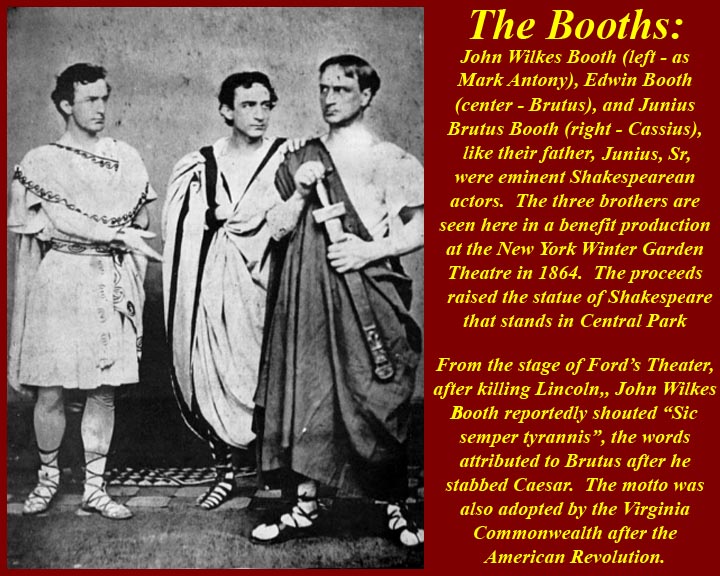
http:/www.mmdtkw.org/RomeShak119-Booths_Caesar.jpg
The performance of the 19th century: the distinguished Shakespearean Booth brothers acted together for the first and only time in a benefit performance of Julius Caesar 0n November 25, 1864. John Wilkes Booth, who played Mark Antony, the only Booth non-assassin in the production, became one less than five months later on April 14, 1865, in Ford's Theater. See http://bigthink.com/Picture-This/mans-final-lore-how-shakespeare-shot-lincoln for how the acting may have triggered the action.
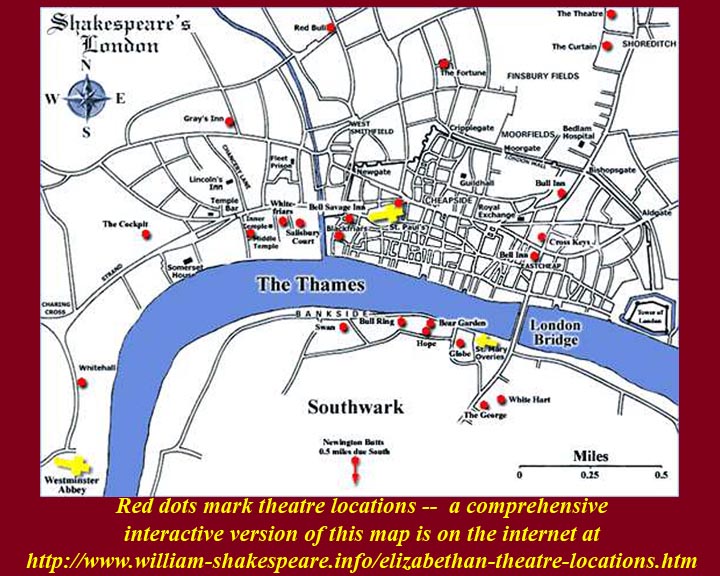
http:/www.mmdtkw.org/RomeShak120-ELIZABETHAN-PLAYHOUSES.jpg
Live entertainment was the only kind available in Shakespeare's London, so there had to be many venues. Shakespeare's plays were first produced in theatres in the northeast of the city. Later, health restrictions, religious pressure, and a dispute over a lease caused Shakespeare's company to pull up stakes and move to the south side of the Thames.
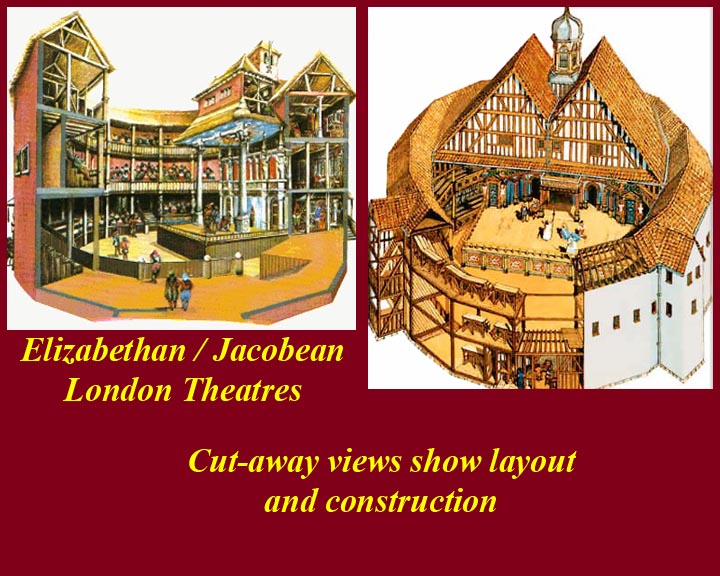
http:/www.mmdtkw.org/RomeShak121-TheatreCutaway.jpg
Purpose-built English theatres had round orchestras like ancient Greek theatres (as opposed to the semi-circular orchestras of ancient Roman theatres. Instead of the sloping caveae of the ancient theatres, the London "O" theatres had several tiers of balcony seats where the higher paying customers sat. They were open to the air and almost always hosted daytime performances. London theatre companies also played in square or rectangular open courtyards of inns. The "King's Men", Shakespeare's acting company, eventually also played in the indoor Blackfriars theatre.
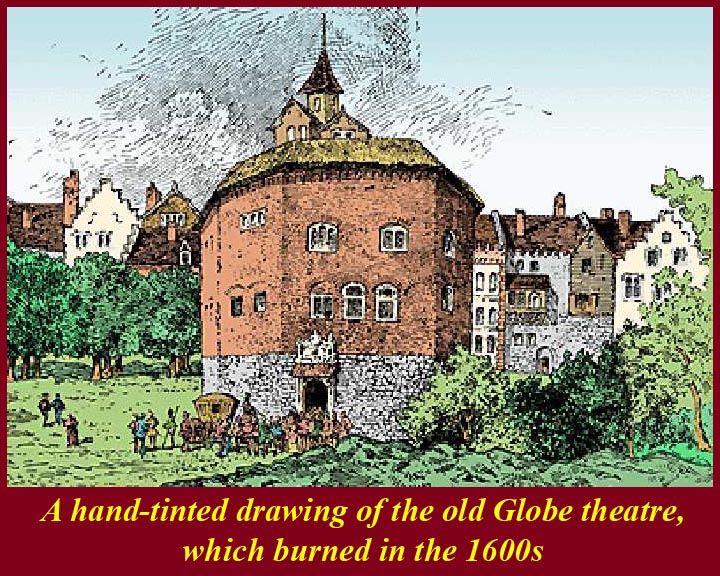
http:/www.mmdtkw.org/RomeShak122-OldGlobeDrawing.jpg
The old Globe theatre was octagonal and was built on the southern shore of the Thames. The drawing shows it standing in isolation, but on theatre days if would have been surrounded by tents, booths, and kiosks where food and souvenirs were available for the audience which could reach 3,000.
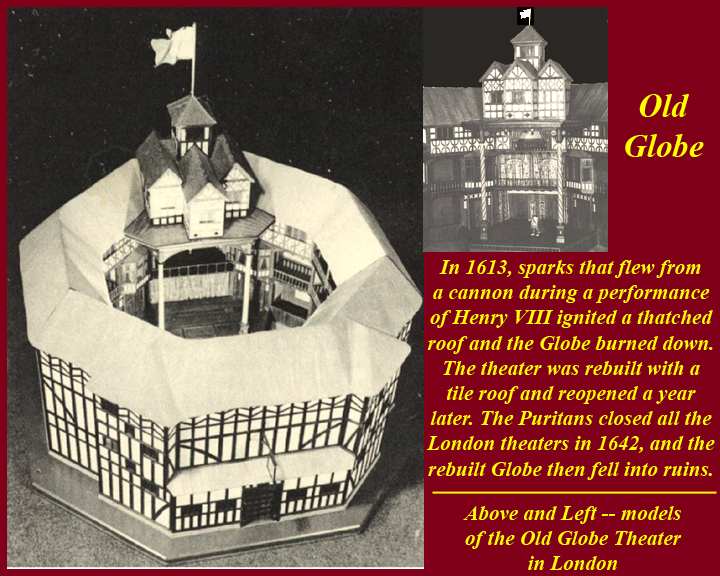
http:/www.mmdtkw.org/RomeShak123-OldGlobModel.jpg
The old Globe burned in 1613 but was rebuilt for the next year's season. The new theatre was closed by the Puritans when they came to power in 1642 and never reopened.
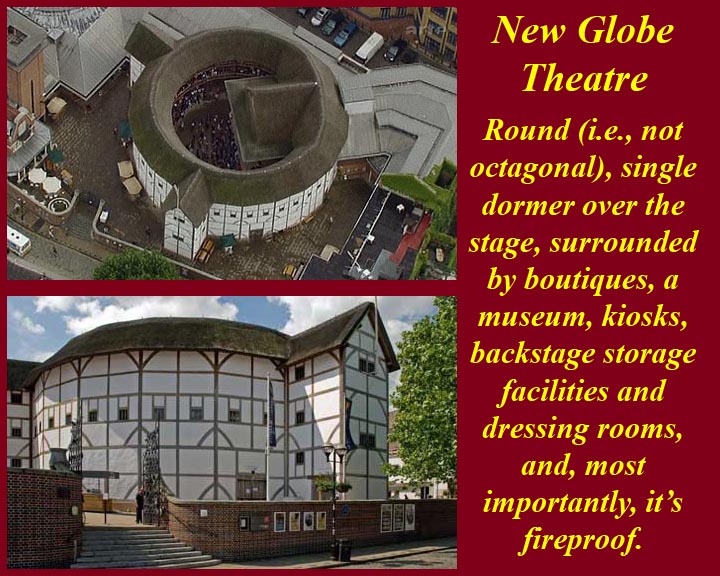
http:/www.mmdtkw.org/RomeShak124-NewGlobeExterior.jpg
The modern Globe, which was built near the site of the derelict 1614 Globe, opened in 1997. Its thatched roof is the first that was allowed in London since the great fire of 1666. The roof is heavily treated with fire retardants, and it and the theatre have a complex sprinkler system.
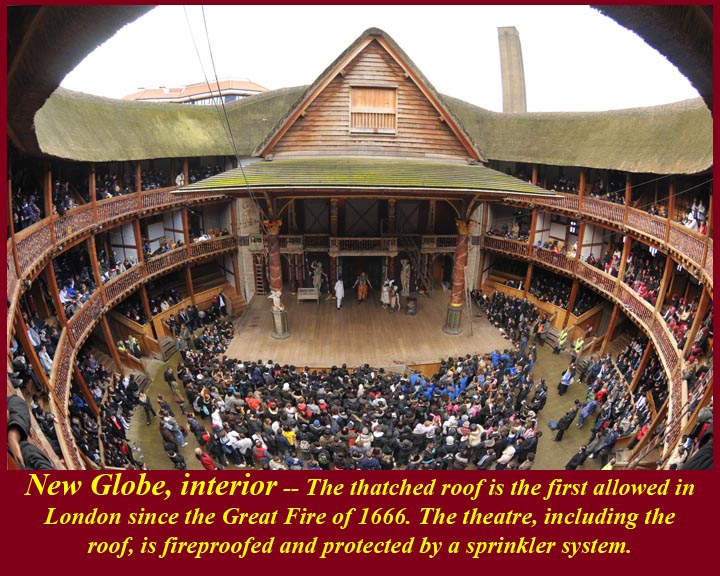
http:/www.mmdtkw.org/RomeShak125-NewGlobeInterior1.jpg
Interior of the modern Globe
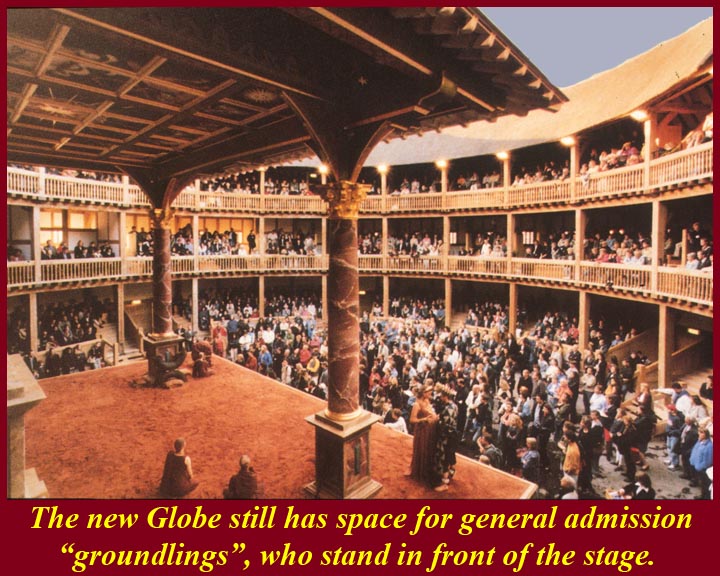
http:/www.mmdtkw.org/RomeShak126-NewGlobeGroundlings.jpg
View from the stage of the modern Globe
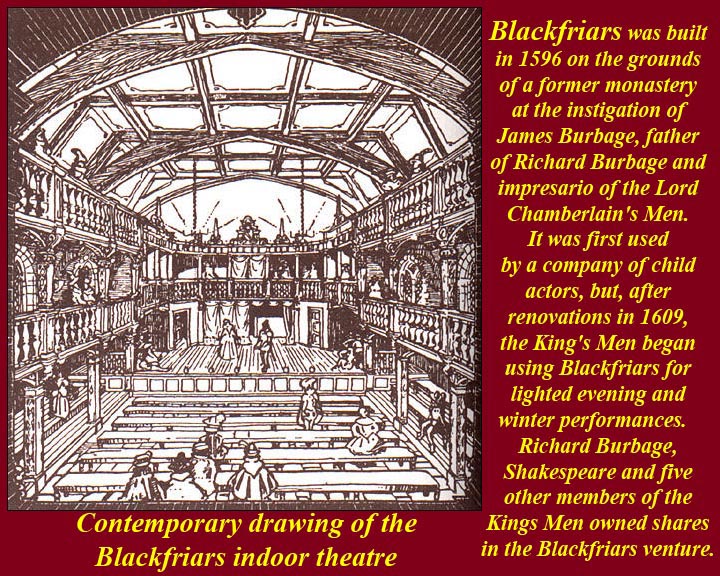
http:/www.mmdtkw.org/RomeShak127-BlackfriarsLondon.jpg
A drawing of the interior of the Blackfriars theatre
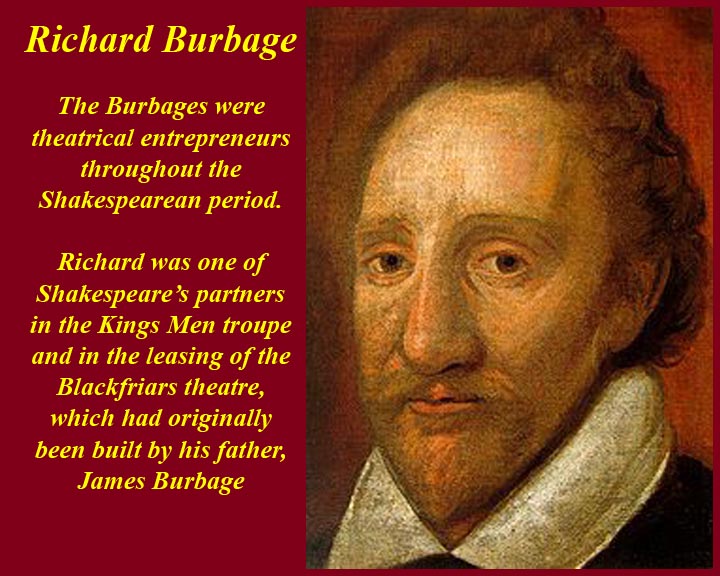
http:/www.mmdtkw.org/RomeShak128-RichardBurbage.jpg
Richard Burbage, the entrepreneur who arranged the King's Men use of the Blackfriars, which had been built by his father on the compound of the old Blackfriars monastery.
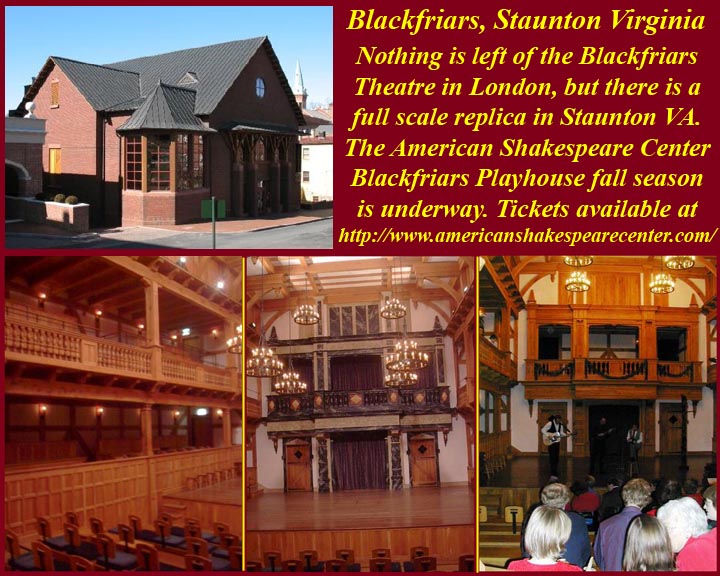
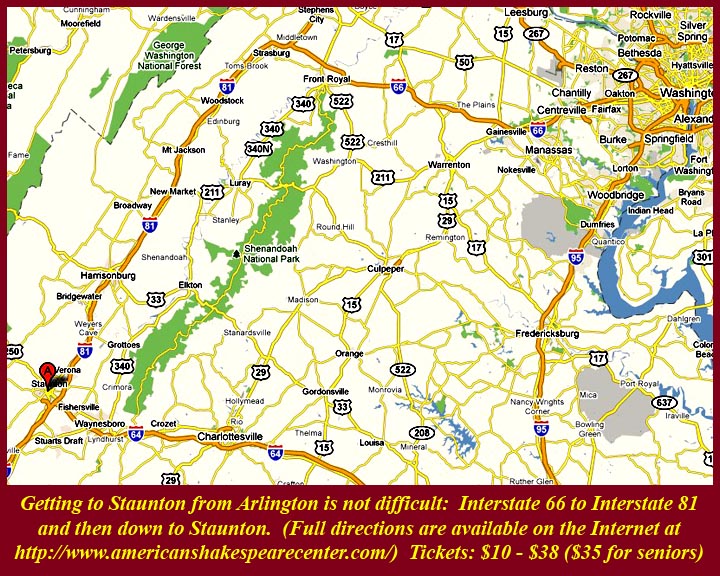
http:/www.mmdtkw.org/RomeShak129-BlackfriarsStauntonVA.jpg
http:/www.mmdtkw.org/RomeShak130-StauntonDirections.jpg
Nothing is left of the London Blackfriars Theatre, but a full scale replica is in Staunton Virginia.
-----------------------------------------------------
Coriolanus
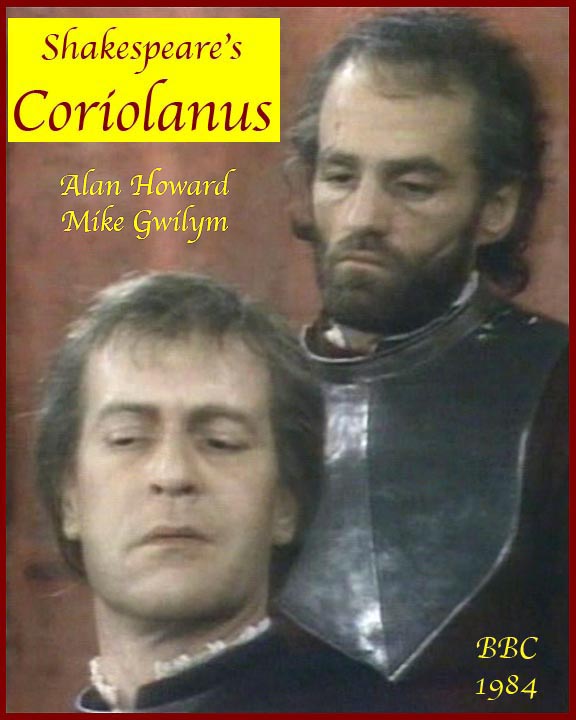
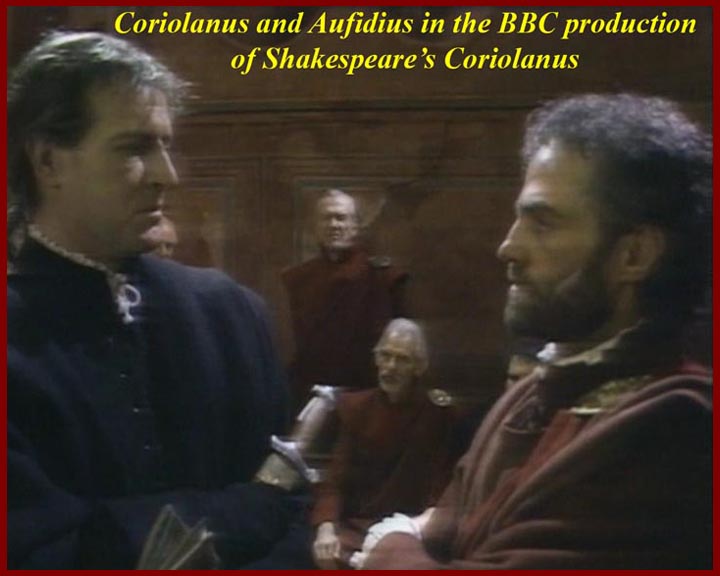
http:/www.mmdtkw.org/RomeShak131-Coriolanus.jpg
http:/www.mmdtkw.org/RomeShak132-CoriolanusAufidius.jpg
Coriolanus is a 1608 tragedy by William Shakespeare, based on the life of the legendary Roman leader, Gaius Martius
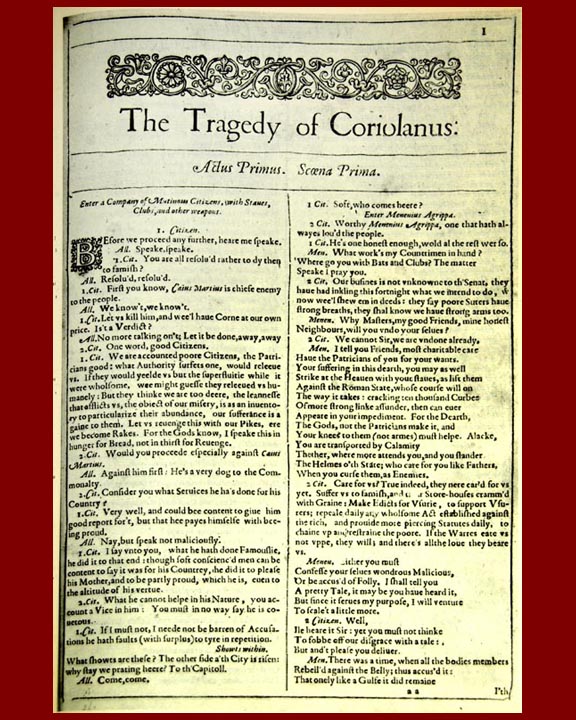
http:/www.mmdtkw.org/RomeShak133-FirstFolioCoriolanus.jpg
The text of the play was first published in the 1623 First Folio. The detailed stage directions that were printed with the text lead Shakespeare scholars to believe that the play was copied from a performance prompt book.
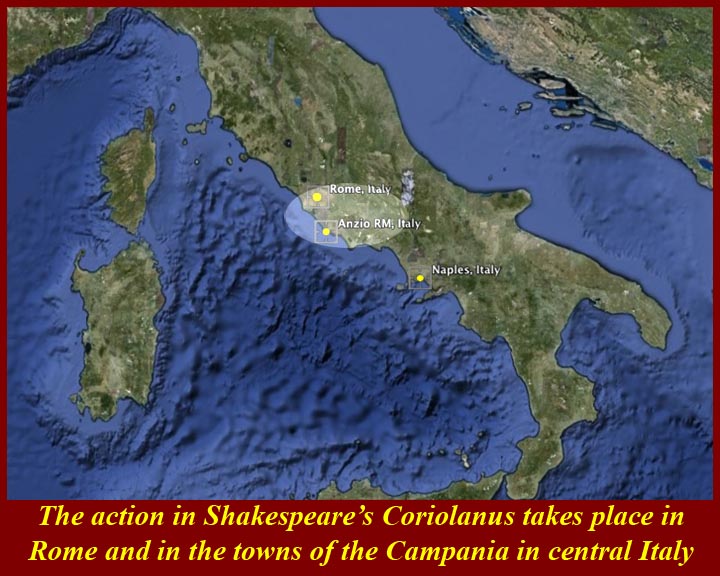
http:/www.mmdtkw.org/RomeShak134-CoriolanusActionVenue.jpg
The action in Coriolanus takes place in Rome and the towns of the Campania
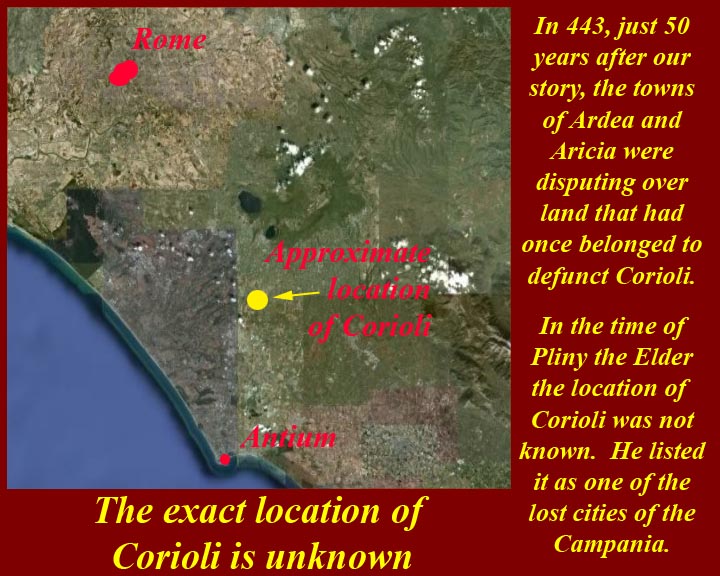
http:/www.mmdtkw.org/RomeShak135-CorioliLocatorMap.jpg
The exact location of the town of Corioli, from which the cognomen Coriolanus was derived, already was lost in ancient times although we know its approximate location from references to its former agricultural properties. A cognomen was a name added behind a person's praenomen and nomen to show a place of origin or a personal or family characteristic. An agnomen was an honorific cognomen given to a person, for example, after a military victory. Publius Cornelius Scipio Africanus had the cognomen Scipio and the agnomen Africanus. Coriolanus was Gaius Marius with the cognomen Coriolanus. According to Roman mythology "Coriolanus" was an agnomen he acquired for capturing the town of Corioli, but agnomens did not come into use until several centuries later, so it was probably a cognomen indicating his place of origin.
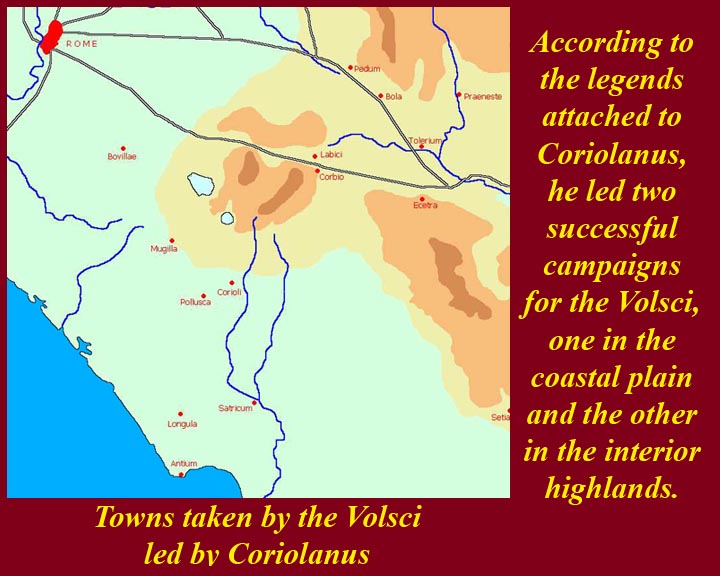
http:/www.mmdtkw.org/RomeShak136-coriolanus_map.jpg
After the defection of Coriolanus to the Volsci, he led two campaigns during which he captured highland and lowland towns that had previously been under Roman authority.
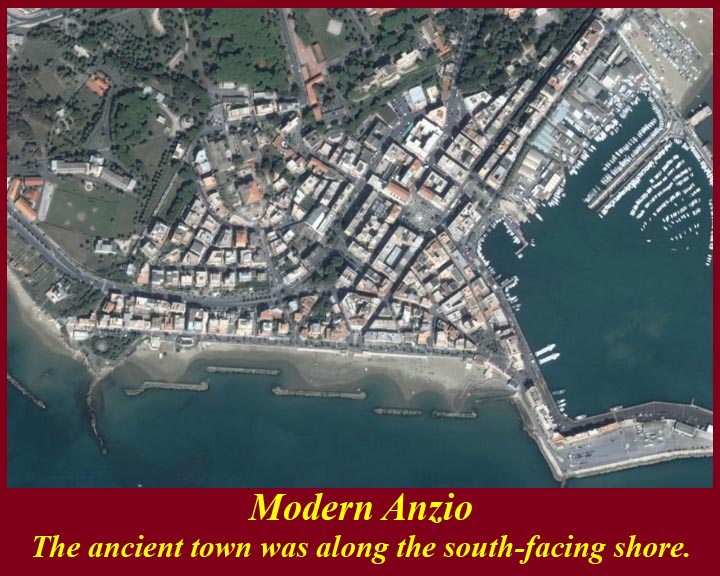
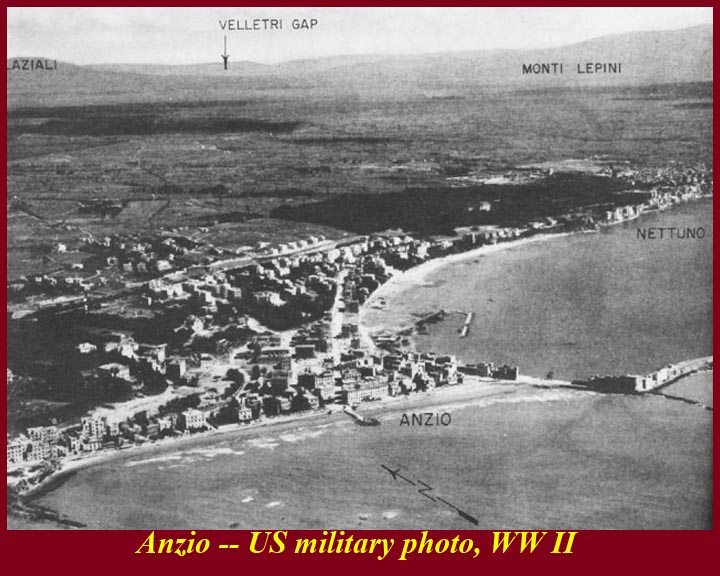
http:/www.mmdtkw.org/RomeShak137-AnzioModernAerial.jpg
http:/www.mmdtkw.org/RomeShak138-Anzio-2.jpg
Antium (the headquarters of Aufidius of the Volsci) today and during the 2nd World War
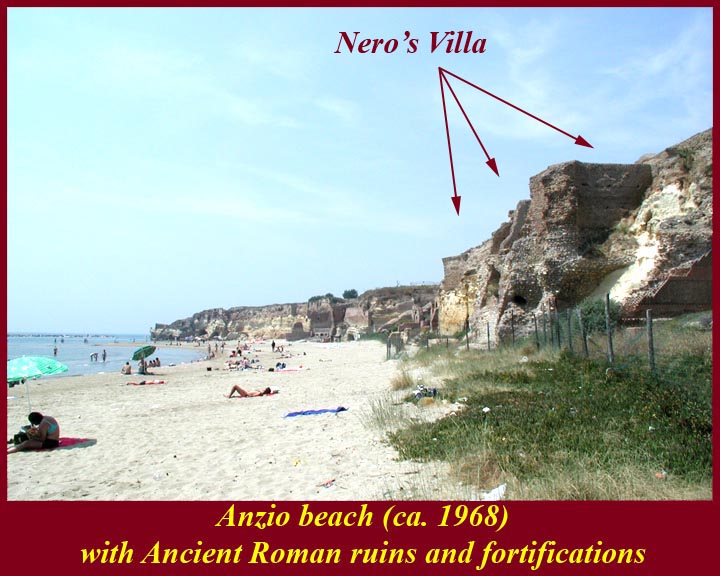
http:/www.mmdtkw.org/RomeShak139-Antium_Anzio.jpg
Anzio beach
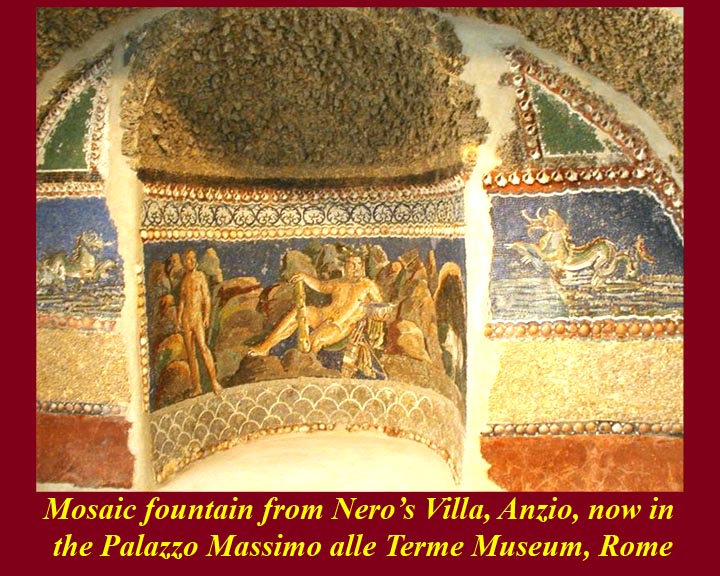
http:/www.mmdtkw.org/RomeShak140-AntiunNeroHerculesNymphaeum.jpg
The nymphaeum fountain from Nero's villa in Anzio is now in a museum in Rome
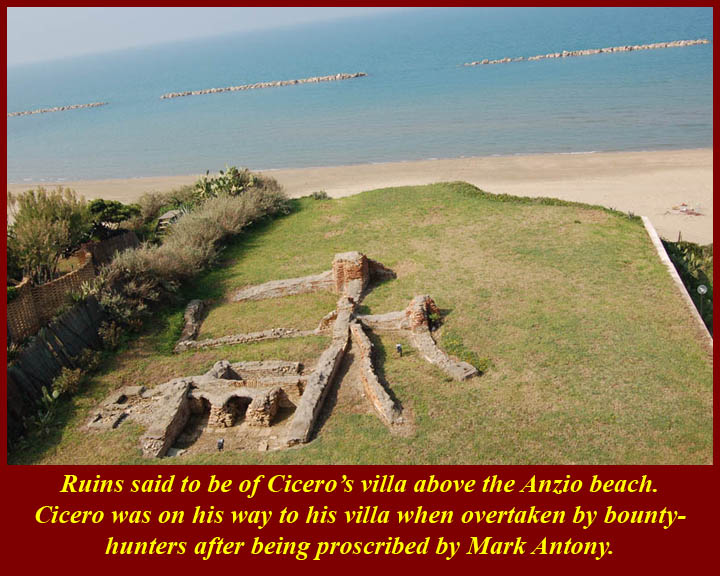
http:/www.mmdtkw.org/RomeShak141-CiceroVillaAntium.jpg
Remains of Cicero's Antium villa
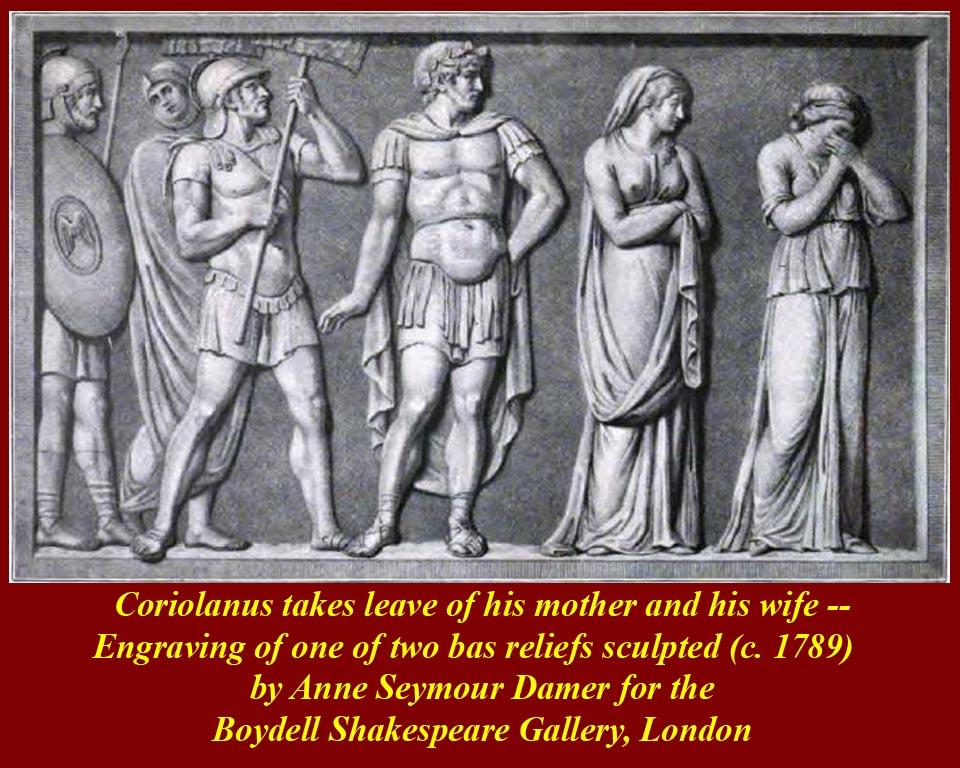
http:/www.mmdtkw.org/RomeShak142-Coriolanus-AnneSeymourDamer.jpg
Coriolanus takes leave of his mother and his wife
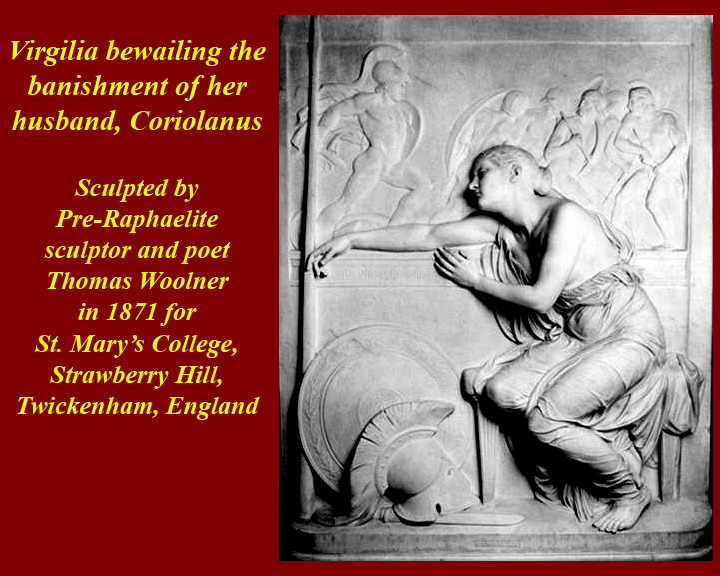
http:/www.mmdtkw.org/RomeShak143-WoolnerVirgilia.jpg
Virgilia mourns the absence of her husband Coriolanus
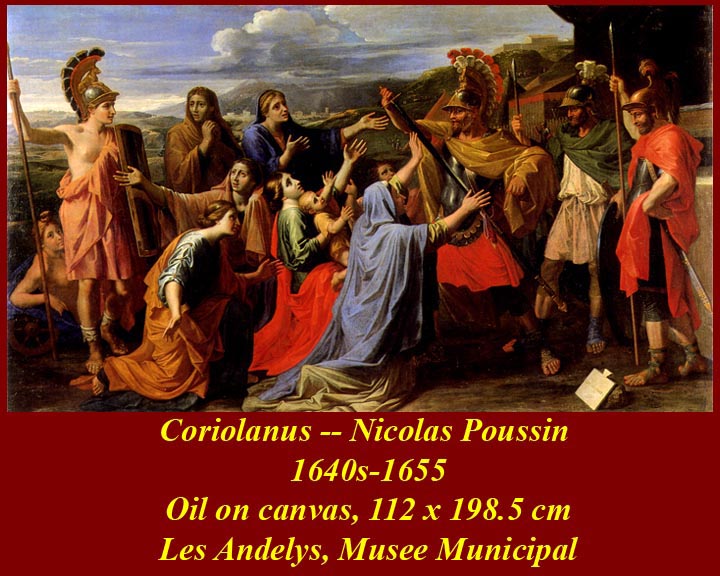
http:/www.mmdtkw.org/RomeShak144-CoriolanusPoussin.jpg
The mother of Coriolanus intercedes with her son
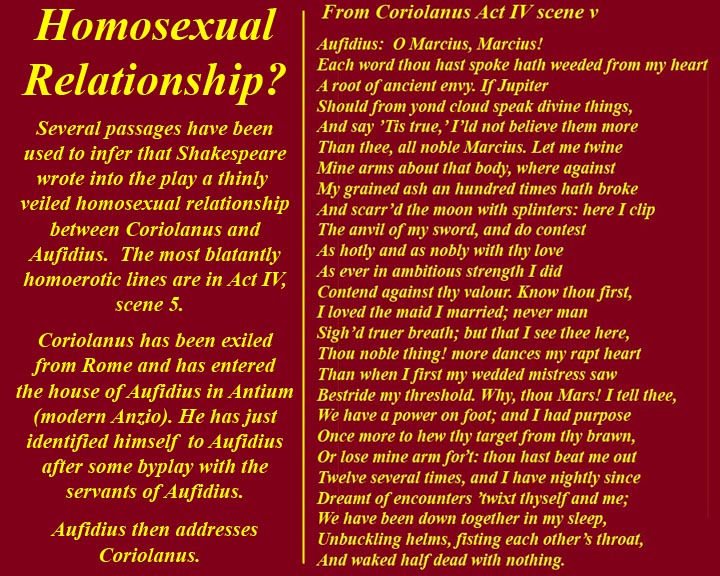
http:/www.mmdtkw.org/RomeShak145-CoriolanusHomoerotica.jpg
Shakespeare strongly implied a homosexual relationship between Coriolanus and Aufidius.
